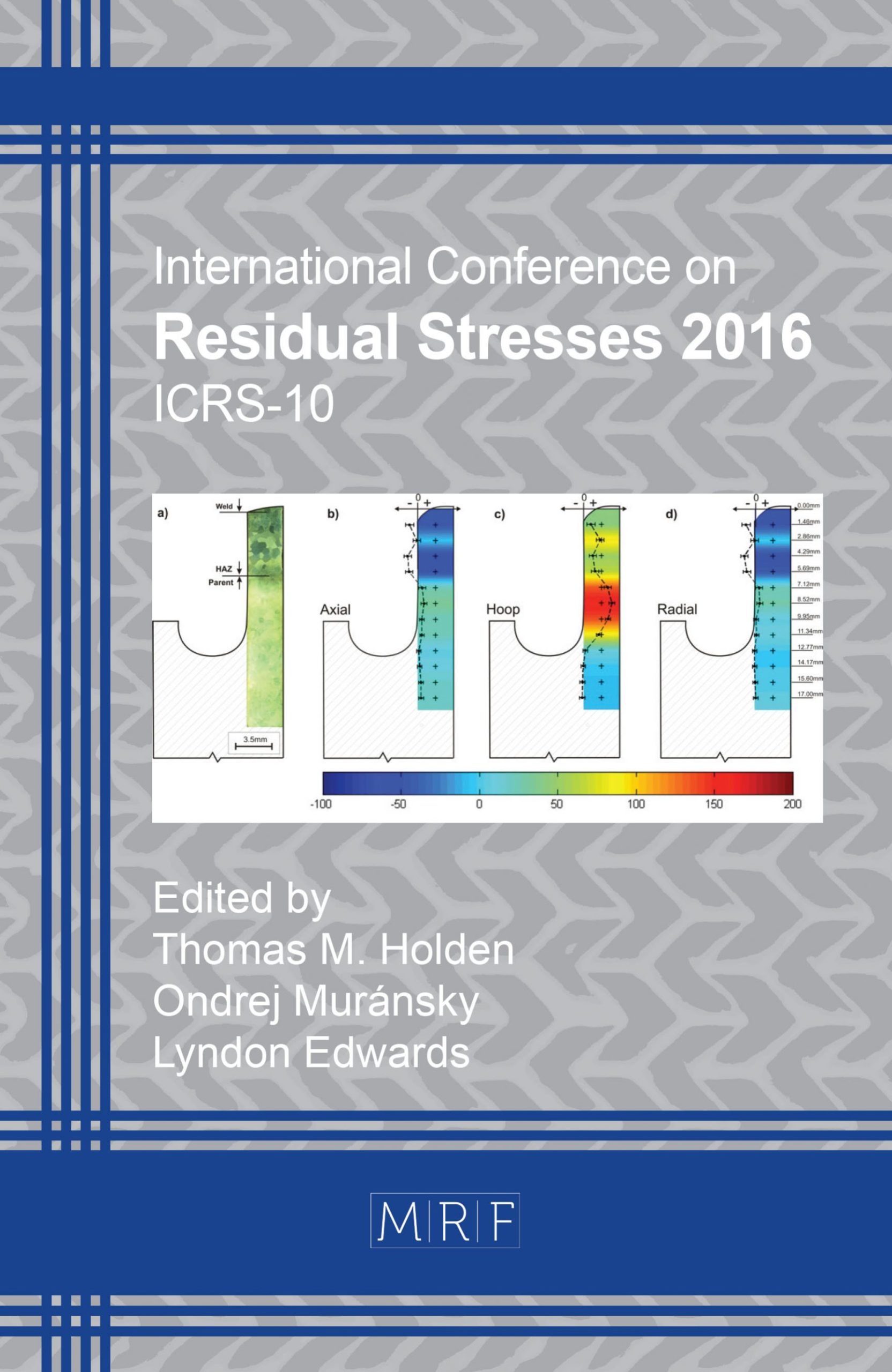Influence of Heat Control on Residual Stresses in Low Transformation Temperature (LTT) Large Scale Welds
J. Dixneit, A. Kromm, M. Boin, T. Kannengiesser, J. Gibmeier
download PDFAbstract. The current paper presents residual stress analyses of large scale LTT (Low Transformation Temperature) welds. LTT filler materials are specially designed for residual stress engineering by means of an adjusted martensite phase transformation. Controlling the level of mostly detrimental residual stresses already during the welding process would be highly attractive as time and cost consuming post processing may be prevented. In large scale welds the residual stress state is influenced by the heat control (e.g. interpass temperature) during welding. Therefore, welding residual stresses are studied here putting the focus on the influence of welding process parameters while joining heavy steel sections with a thickness of 25 mm. The residual stress state was determined at the top surface using X-ray diffraction as well as in the bulk by neutron diffraction. The results show that control of the interpass temperature is vital for the residual stresses present in the joints. This accounts for the top surface but is most pronounced for the bulk of the welds. While high interpass temperatures are appropriate to induce compressive residual stresses in the weld metal, low interpass temperatures favor unwanted tensile residual stresses instead.
Keywords
LTT, Welding Residual Stress, Phase Transformation, Interpass Temperature
Published online 12/22/2016, 6 pages
Copyright © 2016 by the author(s)
Published under license by Materials Research Forum LLC., Millersville PA, USA
Citation: J. Dixneit, A. Kromm, M. Boin, T. Kannengiesser, J. Gibmeier, ‘Influence of Heat Control on Residual Stresses in Low Transformation Temperature (LTT) Large Scale Welds’, Materials Research Proceedings, Vol. 2, pp 223-228, 2017
DOI: http://dx.doi.org/10.21741/9781945291173-38
The article was published as article 38 of the book Residual Stresses 2016
![]() Content from this work may be used under the terms of the Creative Commons Attribution 3.0 licence. Any further distribution of this work must maintain attribution to the author(s) and the title of the work, journal citation and DOI.
Content from this work may be used under the terms of the Creative Commons Attribution 3.0 licence. Any further distribution of this work must maintain attribution to the author(s) and the title of the work, journal citation and DOI.
References
[1] C. Shiga; H.Y. Yasuda; K. Hiraoka; H. Suzuki: Effect of Ms Temperature on Residual Stress in Welded Joints of High-Strength Steels. Welding in the World, Vol. 54 (2010), No. 3-4, pp. R71–R79
[2] J.A. Francis; S. Kundu; H.K.D.H. Bhadeshia; H.J. Stone; R.B. Rogge; P.J. Withers; L. Karlsson: The Effects of Filler Metal Transformation Temperature on Residual Stresses in a High Strength Steel Weld Intervening Transformations. Journal of Pressure Vessel Technology vol. 131 (2009), pp. 1–15. https://doi.org/10.1115/1.3122036
[3] H. Dai; R.J. Moat; P.J. Withers: Modelling the Interpass Temperature Effect on Residual Stress in Low Transformation Temperature Stainless Steel Welds. In: ASME 2011 Pressure Vessels and Piping Conference: Volume 6, Parts A and B, ASME, 2011, pp. 1451–1458. https://doi.org/10.1115/pvp2011-57329
[4] S. Zenitani; N. Hayakawa; J. Yamamoto; K. Hiraoka; Y. Morikage; T. Kubo; K. Yasuda; K. Amano: Development of new low transformation temperature welding consumable to prevent cold cracking in high strength steel welds. Science and Technology of Welding and Joining, Vol. 12 (2007), No. 6, pp. 516–522
[5] S. Vanrostenberghe, M. Clarin, Y. Shin, B. Droesbeke, V. Van der Mee, M. Doré, G. Marquis, J. Parantainen, T. Kannengießer ZB (2015) Improving the fatigue life of high strength steel welded structures by post weld treatments and specific filler material. doi: 10.2777/705266
[6] P. Müller, E. Macherauch: Das sin²ψ-Verfahren der röntgenographischen Spannungsmessung*. Zeitschrift für angewandte Physik. Vol. 13 (1961), pp. 306-312 [in german]
[7] T. Poeste, R. C. Wimpory, R. Schneider: The new and upgraded neutron instruments for material science at HMI – current activities in cooperation with industry. Materials Science Forum, Vol. 524-525 (2006), pp. 223-228. https://doi.org/10.4028/www.scientific.net/MSF.524-525.223
[8] A. Kromm; T. Kannengiesser; J. Altenkirch; J. Gibmeier: Residual Stresses in Multilayer Welds with Different Martensitic Transformation Temperatures Analyzed by High-Energy Synchrotron Diffraction. Materials Science Forum, Vol. 681 (2011), pp. 37–42. https://doi.org/10.4028/www.scientific.net/MSF.681.37































